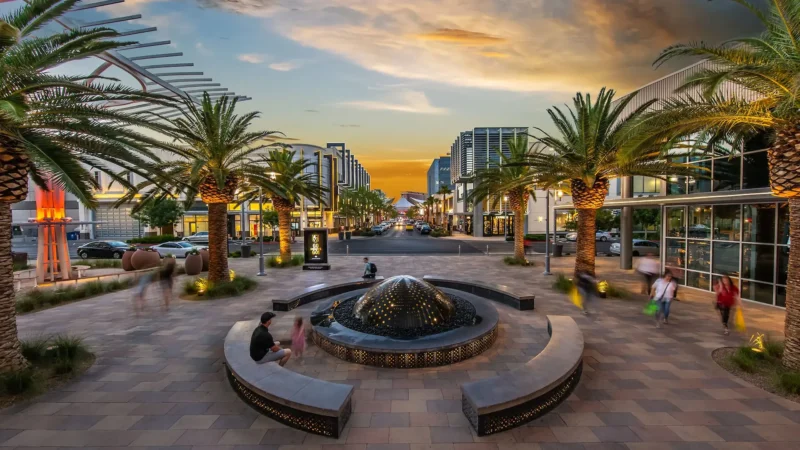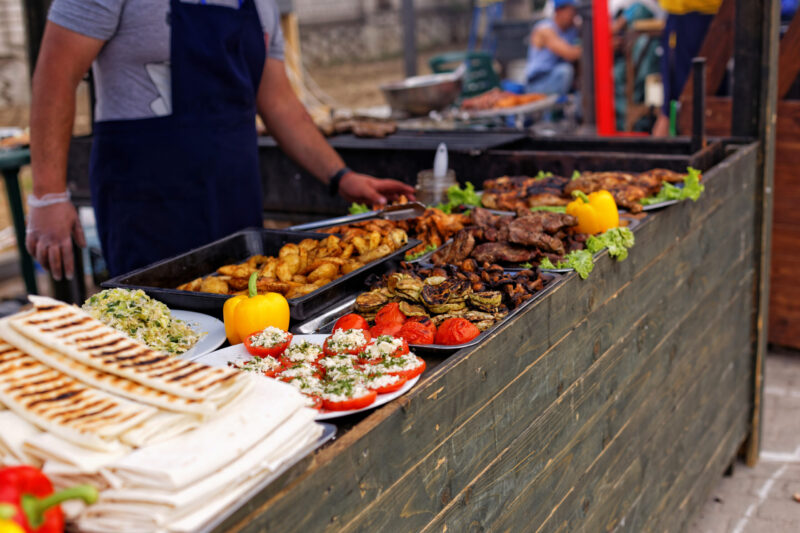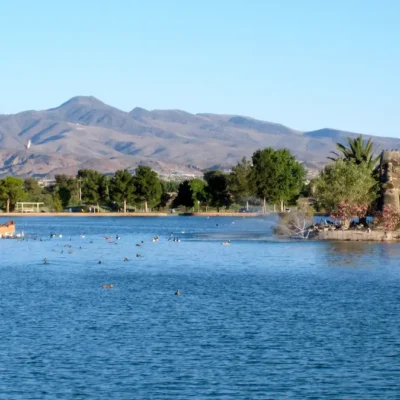Las Vegas weather is widely known as one thing: hot all day, every day of the year. But, the truth is that Las Vegas weather varies seasonally, just like other cities. Not only is so much you know about Southern Nevada’s weather wrong, but you also need to know the beautiful benefits of living in nearly 300 days of sunshine.
Now that we’ve busted one Las Vegas weather myth, let’s see if we can dispel a few more.
Table of contents
- Myth 1: It’s 100+ Degrees All the Time
- Myth 2: It Never Cools Off
- Myth 3: Las Vegas Doesn’t Have Seasons
- Myth 4: Las Vegas Weather Is Unbearable
- Myth 5: Las Vegas Floods All the Time
- Myth 6: Las Vegas Gets Bad Storms
- Myth 7: Southern Nevada Is Due for the “Big One” Earthquake
- Myth 8: Southern Nevada Is Awful for Allergies
- Myth 9: Southern Nevada Is at Imminent Risk of Major Wildfires
- Other Benefits of the Las Vegas Weather
Myth 1: It’s 100+ Degrees All the Time
Fact: Las Vegas weather only tops 100 degrees on average two months out of the year: July and August. Here are Las Vegas’ average monthly temperatures to prove it:
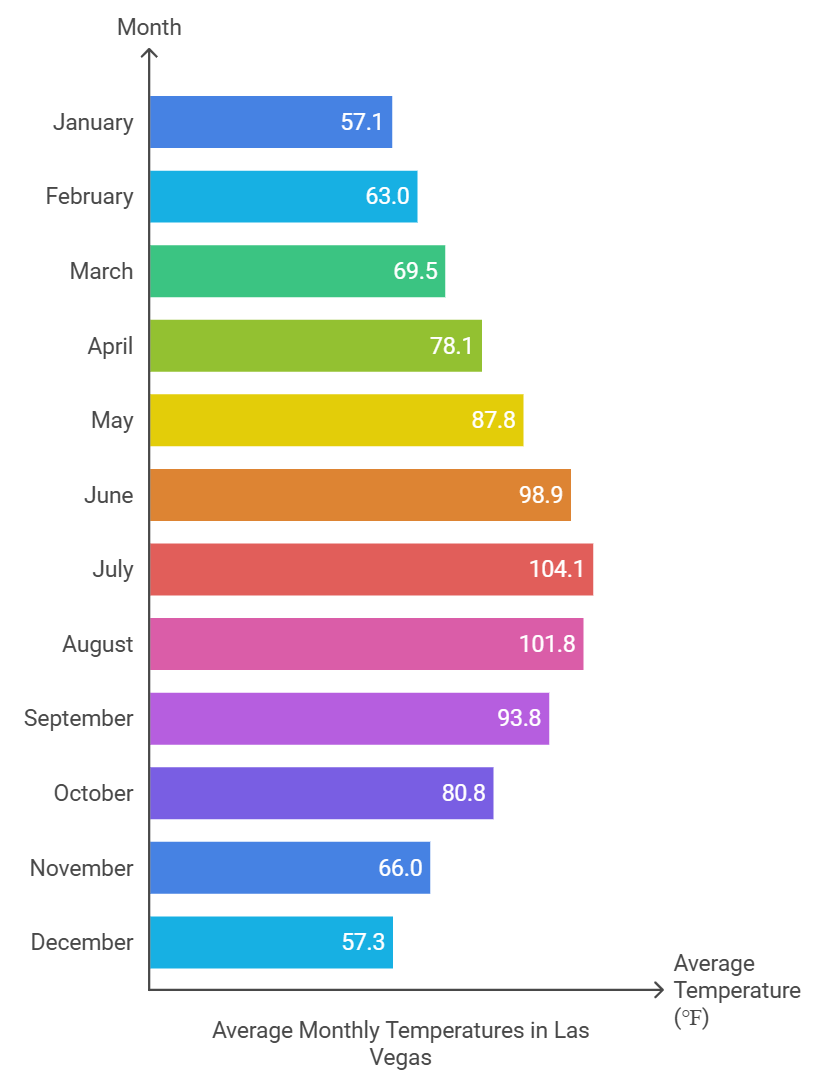
We like to say here, “You don’t have to shovel sunshine,” and if you want to avoid the bitterly cold months up north, there’s no place quite like the Las Vegas weather in winter.
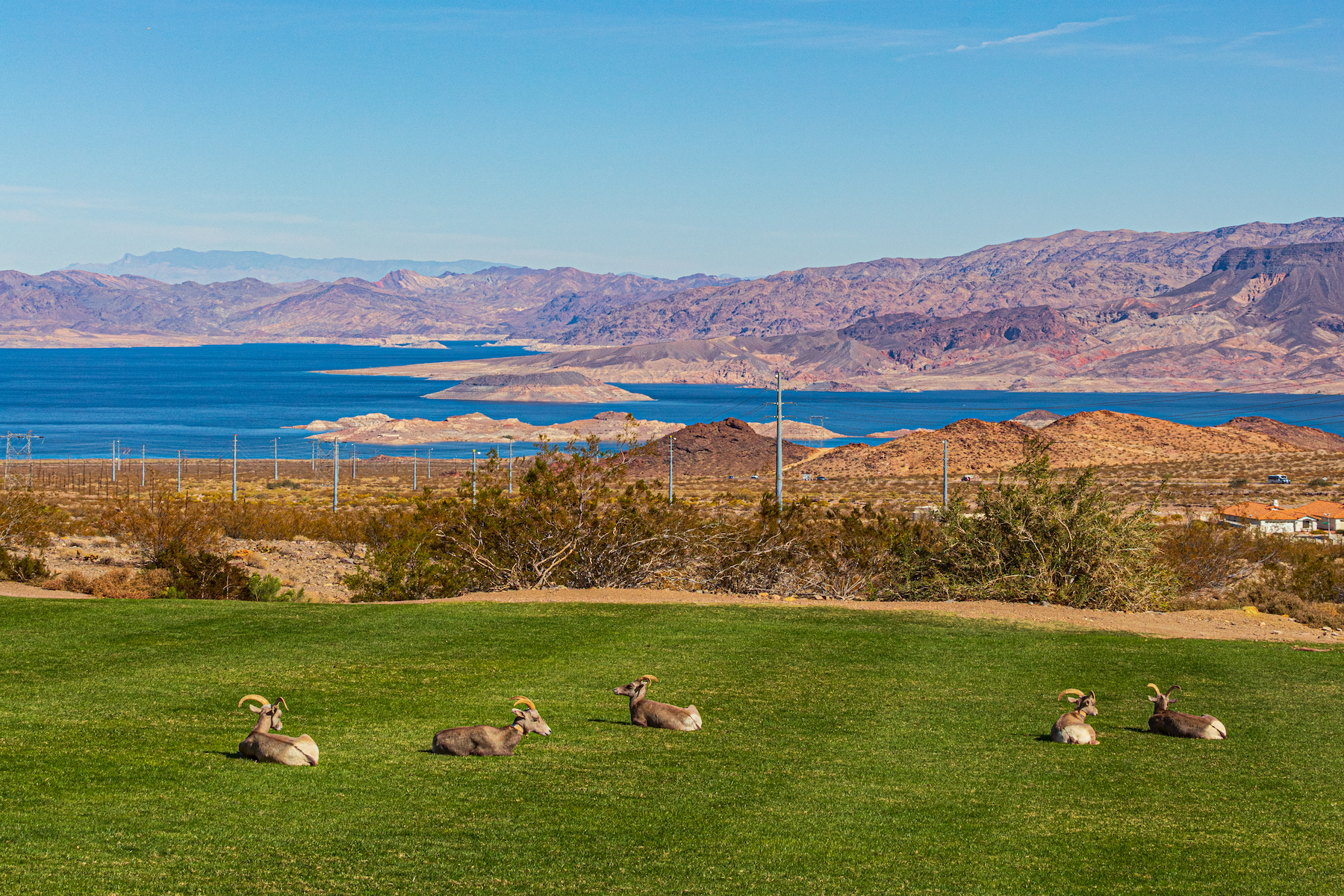
Myth 2: It Never Cools Off
Fact: It can indeed be hot during the middle of the day in summer, but when the sun goes down, it’s a whole different story. Usually, the temperature swings about 25 degrees between daytime highs and overnight lows, so nighttime is almost guaranteed to be cool. There’s nothing like going out on a balmy desert evening with nary a parka to be seen. And those 80-degree daytime temps in October can’t be beat!
If you relocate your business to Southern Nevada, you’ll be surprised at how quickly 60° F feels like jacket weather!
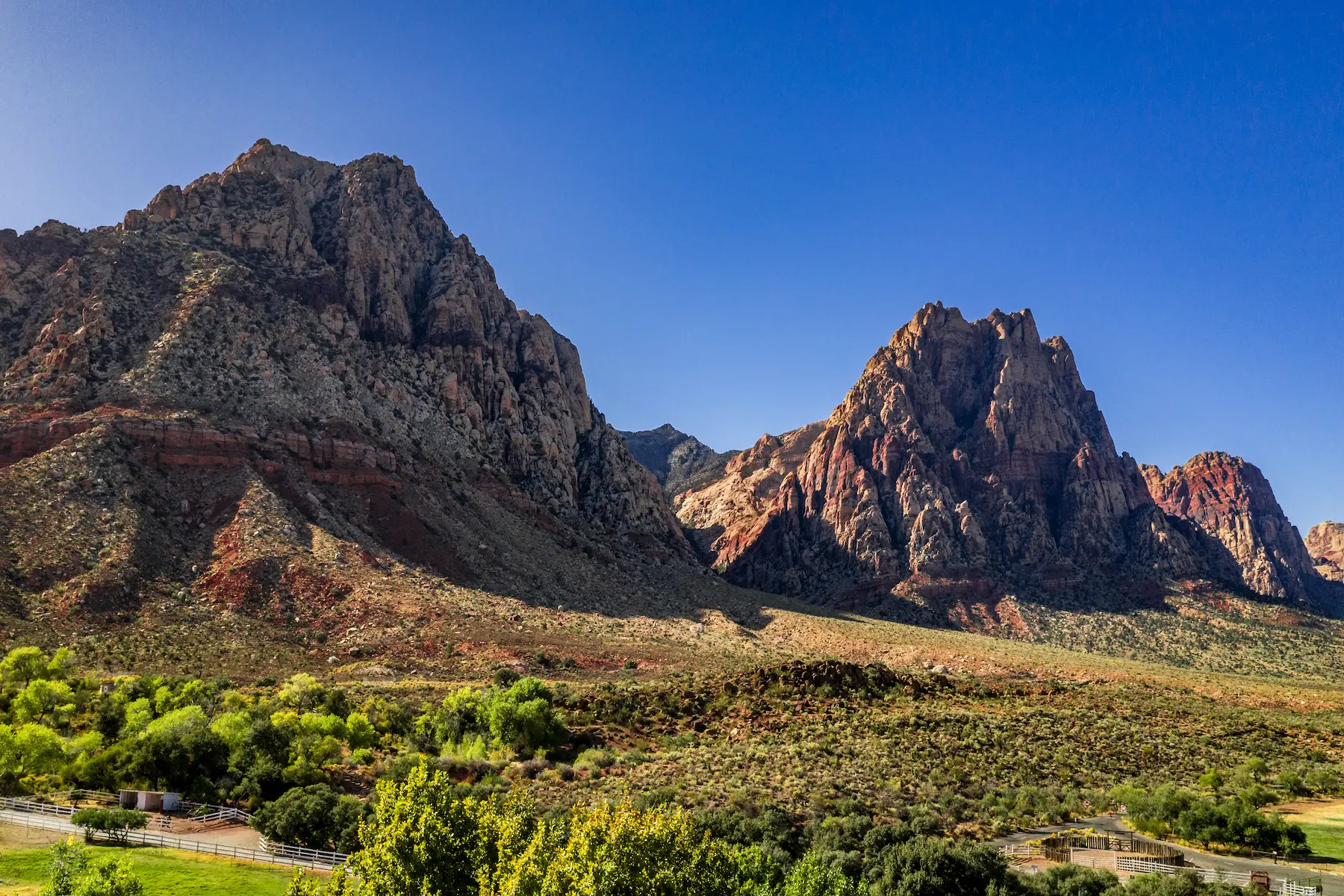
Myth 3: Las Vegas Doesn’t Have Seasons
Fact: Believe it or not, Las Vegas experiences four seasons a year. The leaves change color in fall, and in the spring, the desert blooms with new life and color. And come winter, we’ve even been known to get a bit of snow. Don’t worry, that snow melts pretty fast—so there’s no shoveling required.
As a bonus, those missing the deep snow for playtime can easily drive up Mount Charleston to go skiing, snowshoeing, or cross-country skiing. Lee Canyon’s skiing and snowboarding is in the shadow of Lee Peak, 11,289′.
Even in the Las Vegas Valley, the communities have different elevations. Summerlin and Northwest Las Vegas will get snow before Henderson does.
Let’s take a look at the elevations:
- Las Vegas Strip: 2,030′
- Henderson: 1,864′
- Boulder City: 2,510′
- Mesquite: 1,601′
- North Las Vegas: 2,205′
- Summerlin: 3,500′
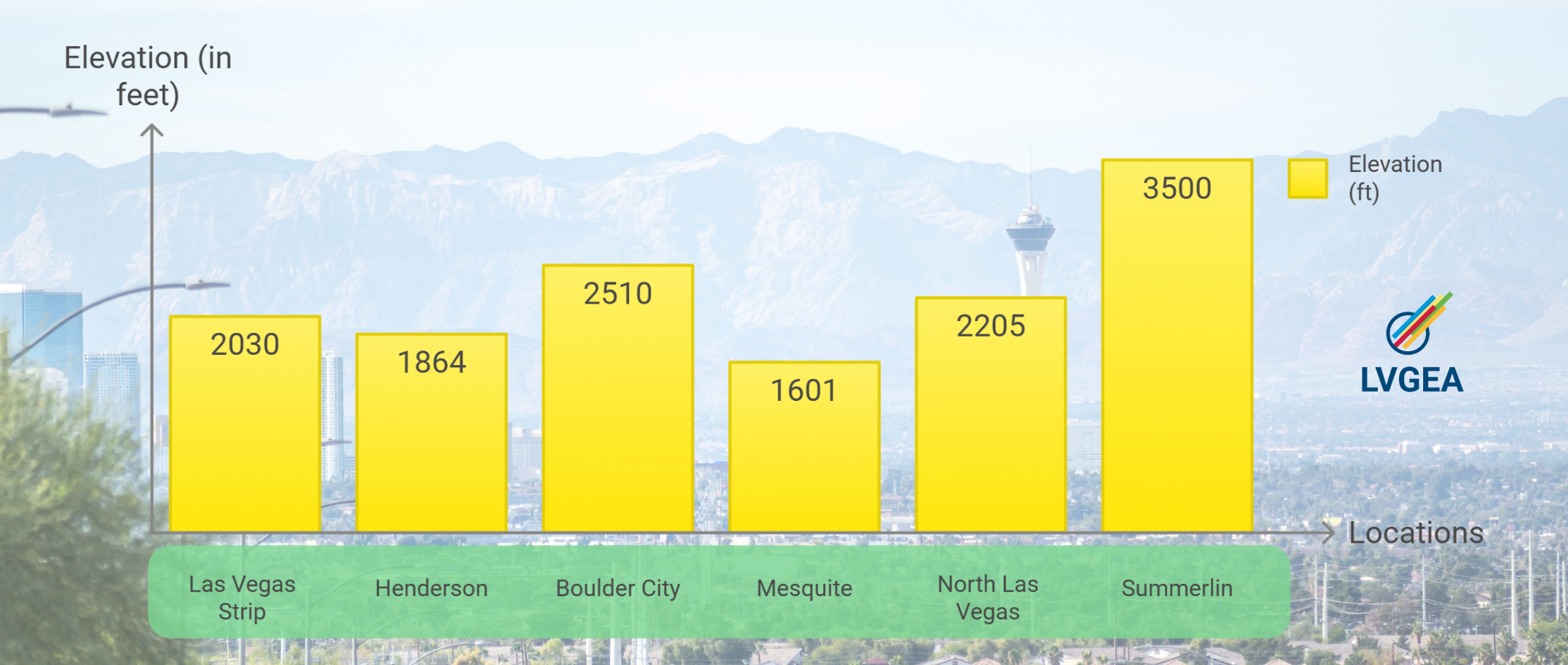
The lowest elevation in Southern Nevada is 1,450′, near Lake Las Vegas. The highest elevation is at Mount Charleston, at 11,916′.
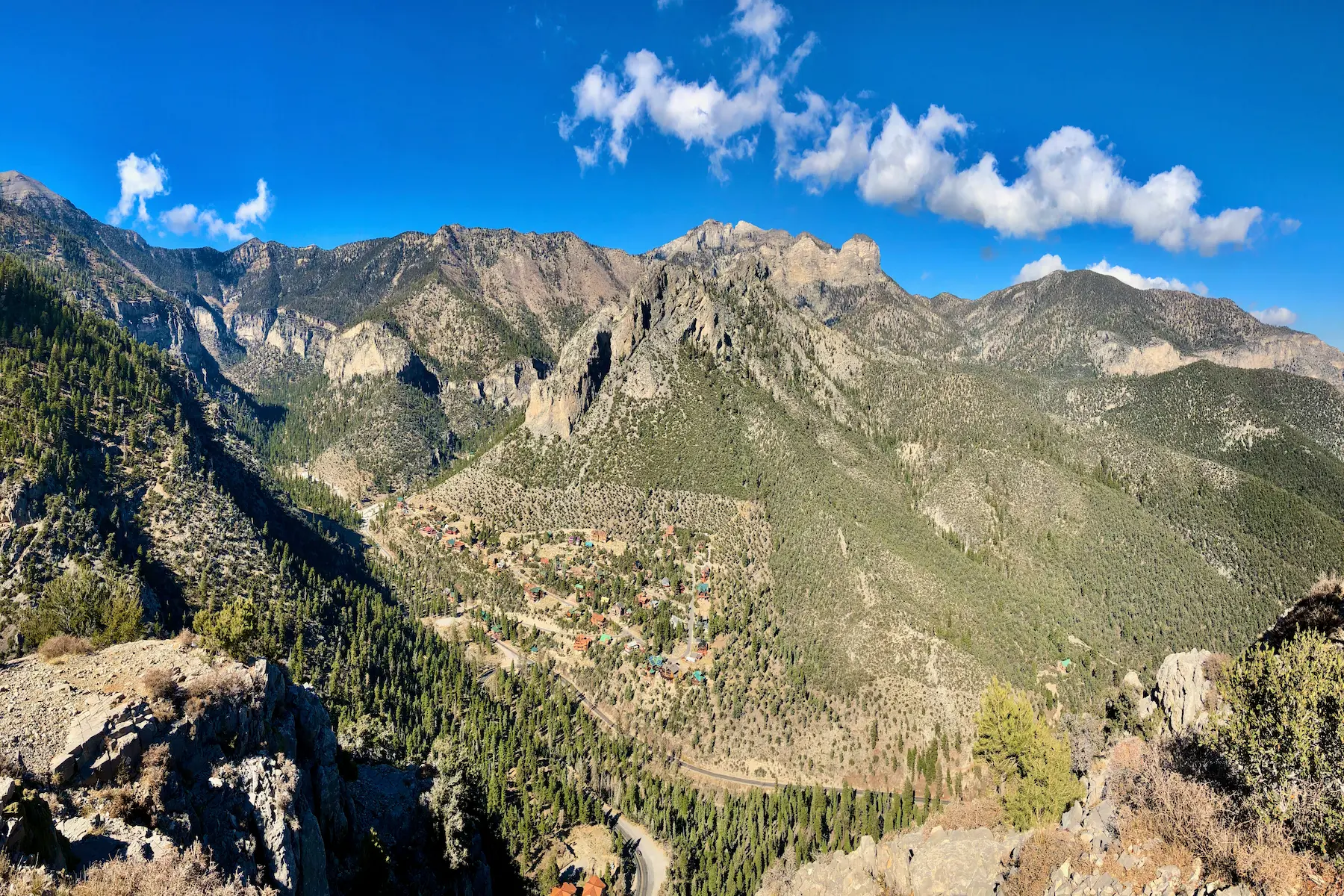
Myth 4: Las Vegas Weather Is Unbearable
Fact: While there’s no denying that Las Vegas gets hot in the summer, it’s by no means unbearable. While we’re quick to say, “It’s a dry heat,” you’ll appreciate the lack of sticky conditions as you’ll find in the South or Midwest.
Even when temperatures top 90 or even 100 degrees, the humidity rarely rises above 30% during the warmest months. Trust us, a 90-degree day with 25% humidity is very different than one with 90% humidity.
Beyond that, the lack of humidity means little chance of sweating through your clothes, needing drink coasters, or ever touching the defogging button on your car’s dashboard. Almost one in four homes has a backyard pool. Finally, it’s important to note that many outdoor districts have misters spraying water that evaporates quickly. You get a cool breeze without getting wet.
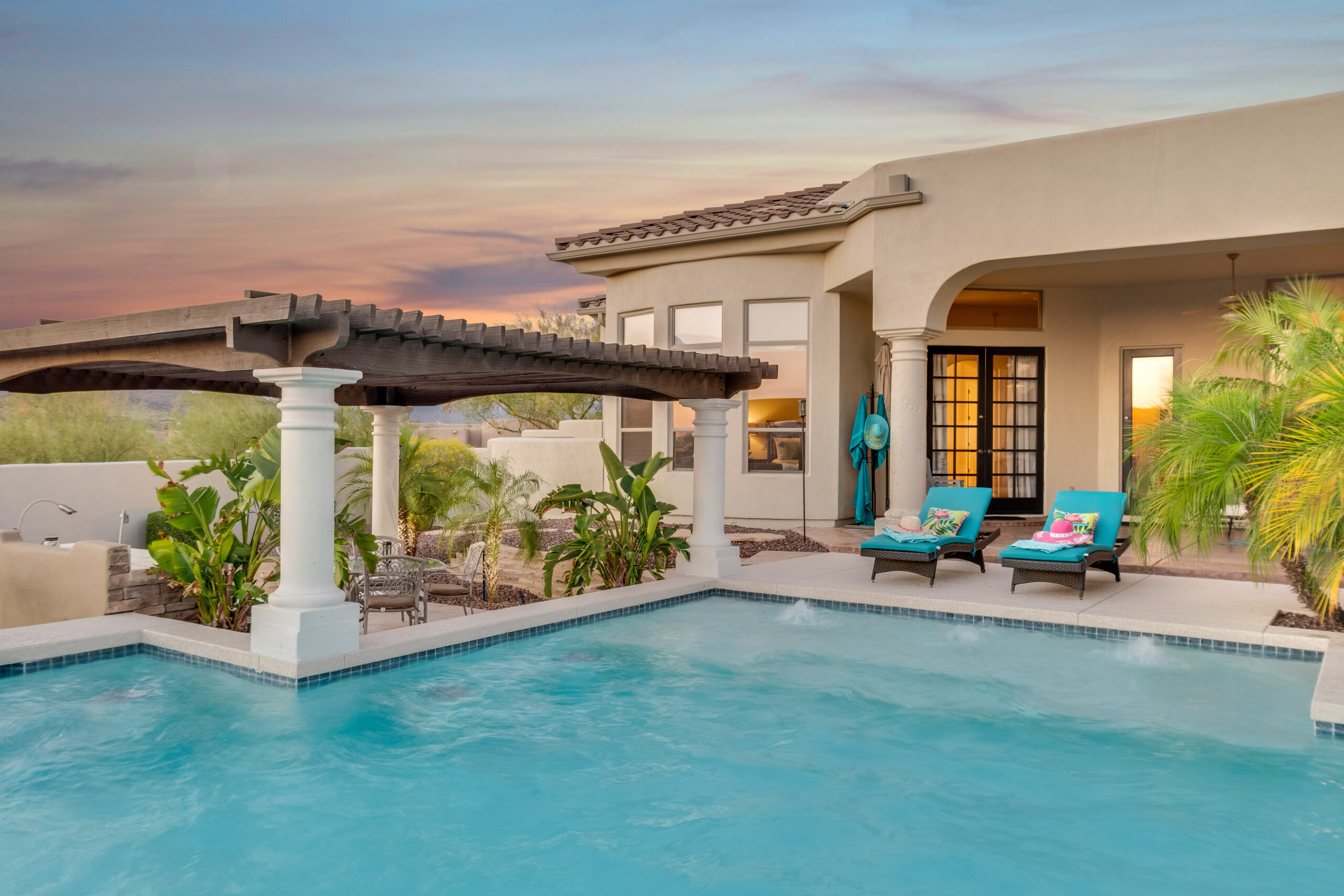
Myth 5: Las Vegas Floods All the Time
With a little over four inches of rain a year, this myth almost falls apart before you even dig into the details. However, many locals cringe when we see national outlets showing videos of a parking garage with “MASSIVE URBAN FLOODING.” What non-local media sources don’t tell you is that the video comes from The Linq, a concrete section designed to be a flood channel. Flash floods are carried to the nearest wash. This is what it is supposed to do!
Flash floods are most likely to happen from July through September, thanks to the monsoons that churn brief but powerful storms. Furthermore, flooding is the most likely disaster in any U.S. community.
Even with an elevated risk of flooding growing in Clark County, even more elevated efforts are being taken to create more drainage pathways to keep water out of roads, neighborhoods, and business districts. Before you plan a move to Southern Nevada, check out the Flood Zone Maps from our friends at the Clark County Regional Flood Control District.
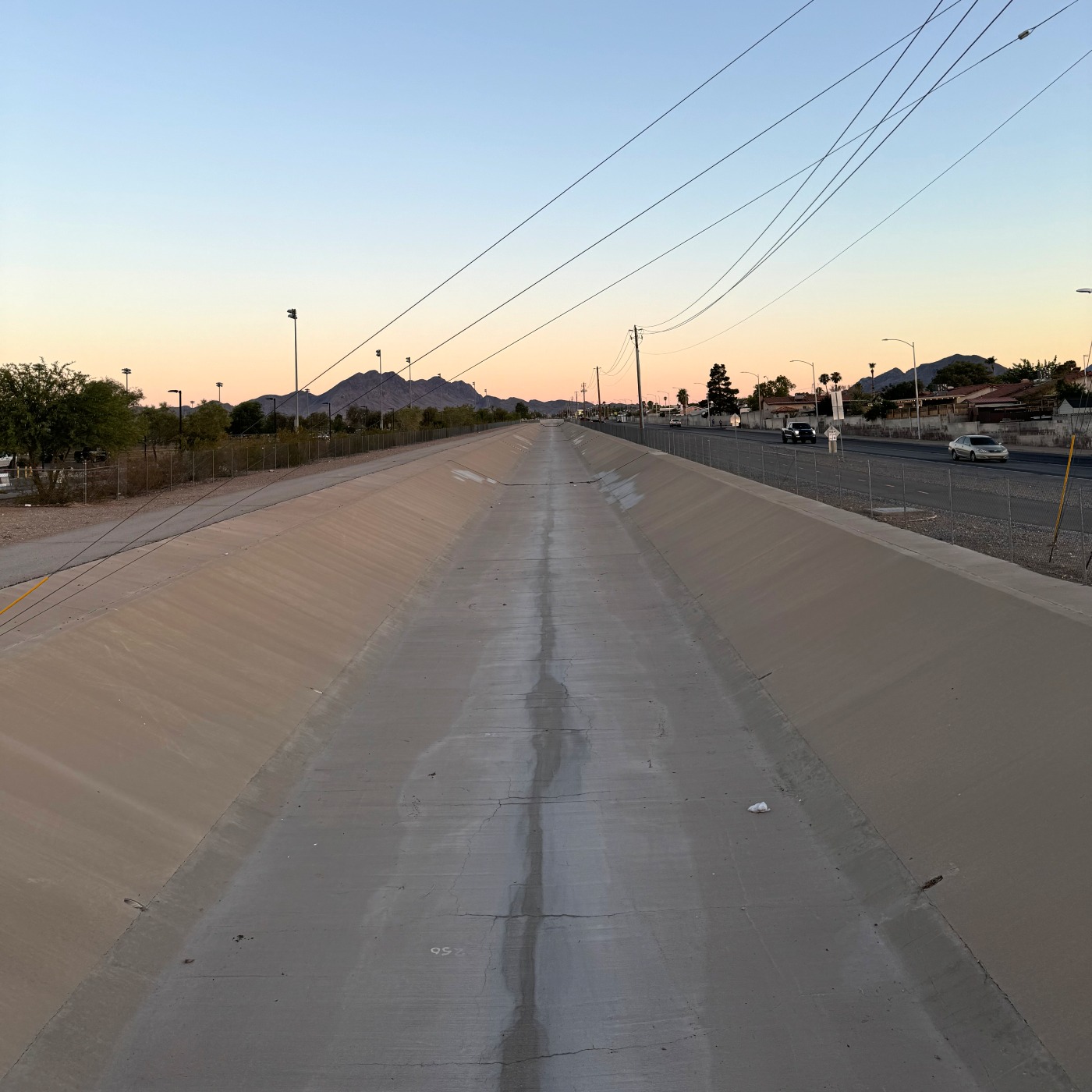
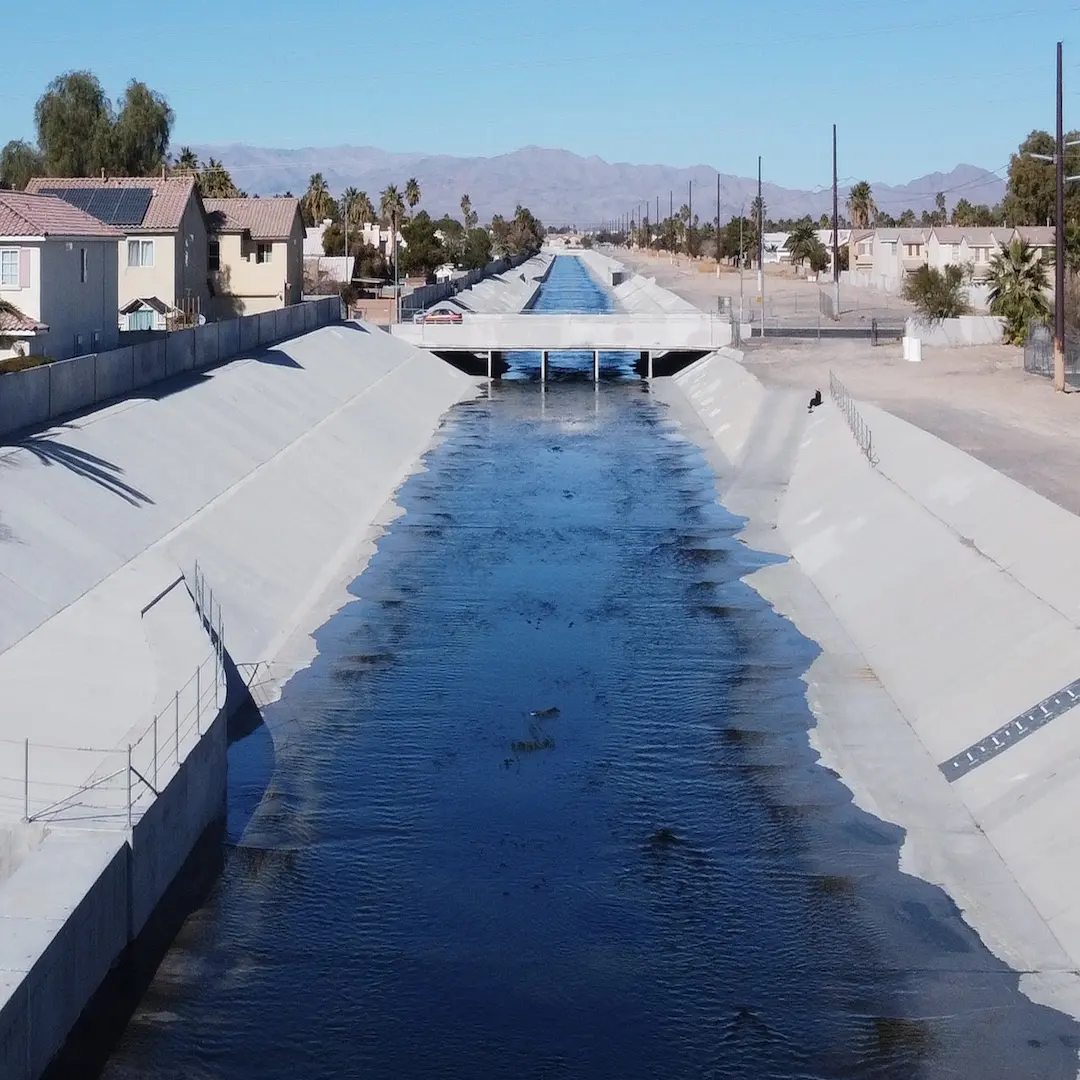
Flood channels located throughout the valley take water runoff and flash flooding from the higher elevations out to Lake Mead.
Myth 6: Las Vegas Gets Bad Storms
While the seasonal flow of summer monsoons can bring mighty rainmakers and bold lightning and thunder, the severity of the storms pales in comparison to the Midwest. In fact, since 2007, just three tornado warnings happened; one in 2007, another in 2014, and the other in 2022. One didn’t touch the ground, and the others were EF0 (on a scale of 0-5).
Plus, Las Vegas skips any concern of hurricane watches or warnings. Even the remnants of Tropical Storm Hillary caused only minor flooding in 2023.
When you live in the Las Vegas Valley, you skip tornado season, hurricane season, and any hint of an ice storm. It’s a fair trade for having some hot days in summer. Another key point is that the storms generally happen during the afternoon, with clear mornings and cooler post-storm evenings.
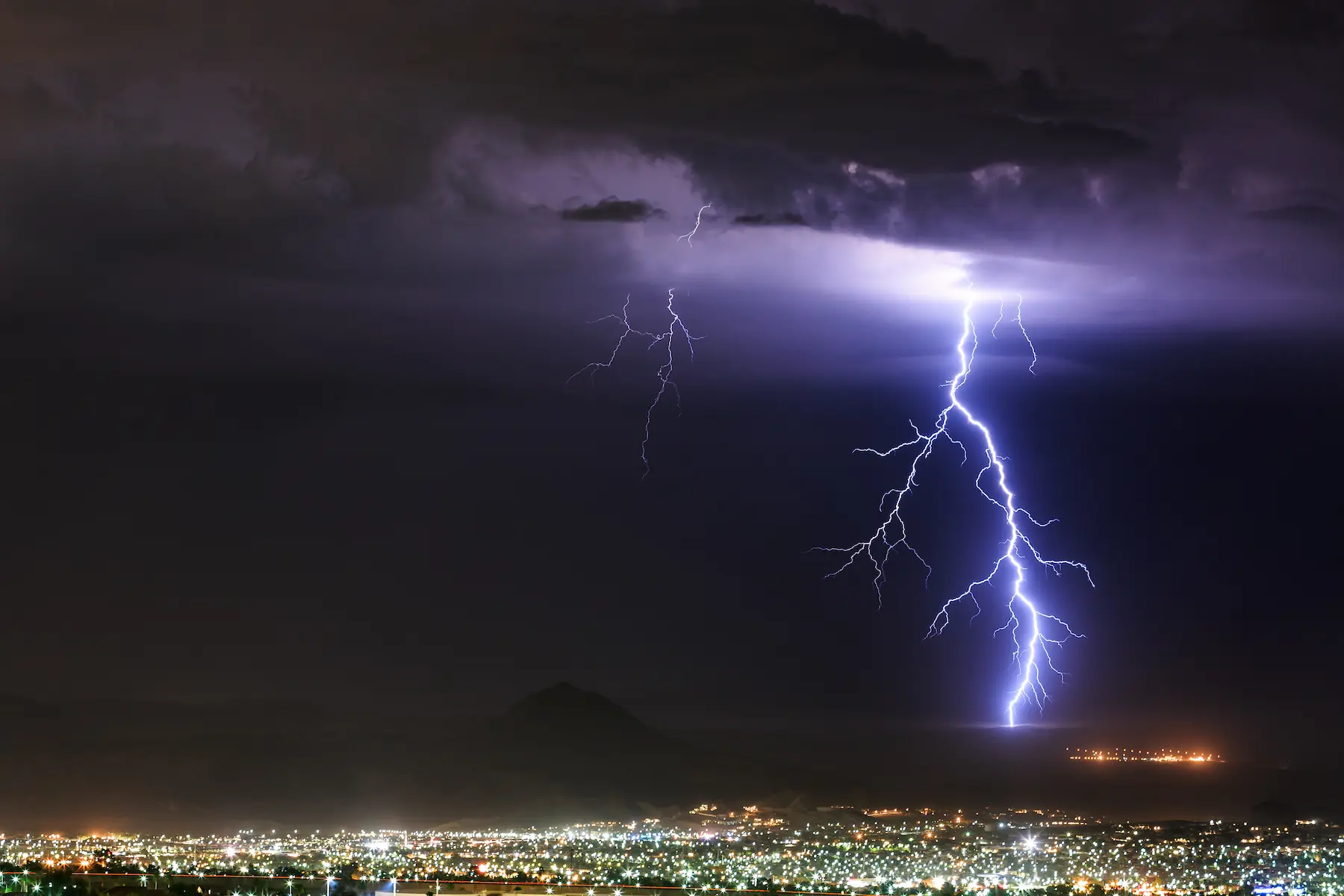
Myth 7: Southern Nevada Is Due for the “Big One” Earthquake
Southern Nevada, including Las Vegas, is not considered overdue for a catastrophic earthquake. Unlike California, Nevada’s earthquake risk is lower, as it isn’t on a major fault line like the San Andreas. While it’s not a myth that Nevada ranks in the top three seismically active states, the shaking concerns aren’t focused primarily around Las Vegas. The USGS compilation of earthquakes in Southern Nevada between 2000 and 2022 punctuates the point.
The Nevada Bureau of Mines & Geology put together this animation showing the earthquakes in Nevada between 1850 and 2012. Keep an eye on Clark County as the video plays out.
While earthquake preparedness is important, you should also know that Clark County and the municipality building codes are among the toughest nationwide. That makes significant damage less likely. Southern Nevada’s major earthquake risk is real but remains infrequent and generally moderate to low.
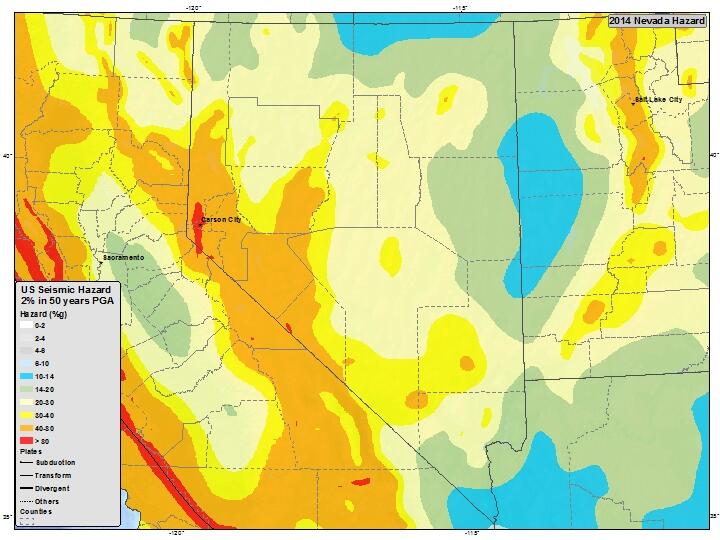
Myth 8: Southern Nevada Is Awful for Allergies
The dry Las Vegas weather actually makes it one of the best cities for allergy sufferers. The arid environment means low humidity, which minimizes the presence of mold, dust mites, and other allergens common in wetter climates.
Additionally, pollen levels are generally lower due to sparse vegetation compared to lush regions, with only mild seasonal spikes in allergens from specific desert plants like mulberry and olive trees. With fewer trees, grasses, and allergens overall, residents with seasonal or mold allergies often find symptoms improve significantly.
While we’re not allergy-free, our climate does have one of the best rankings for breathing easy.
MORE: Check Allergy Conditions in the Las Vegas Area from the National Allergy Bureau
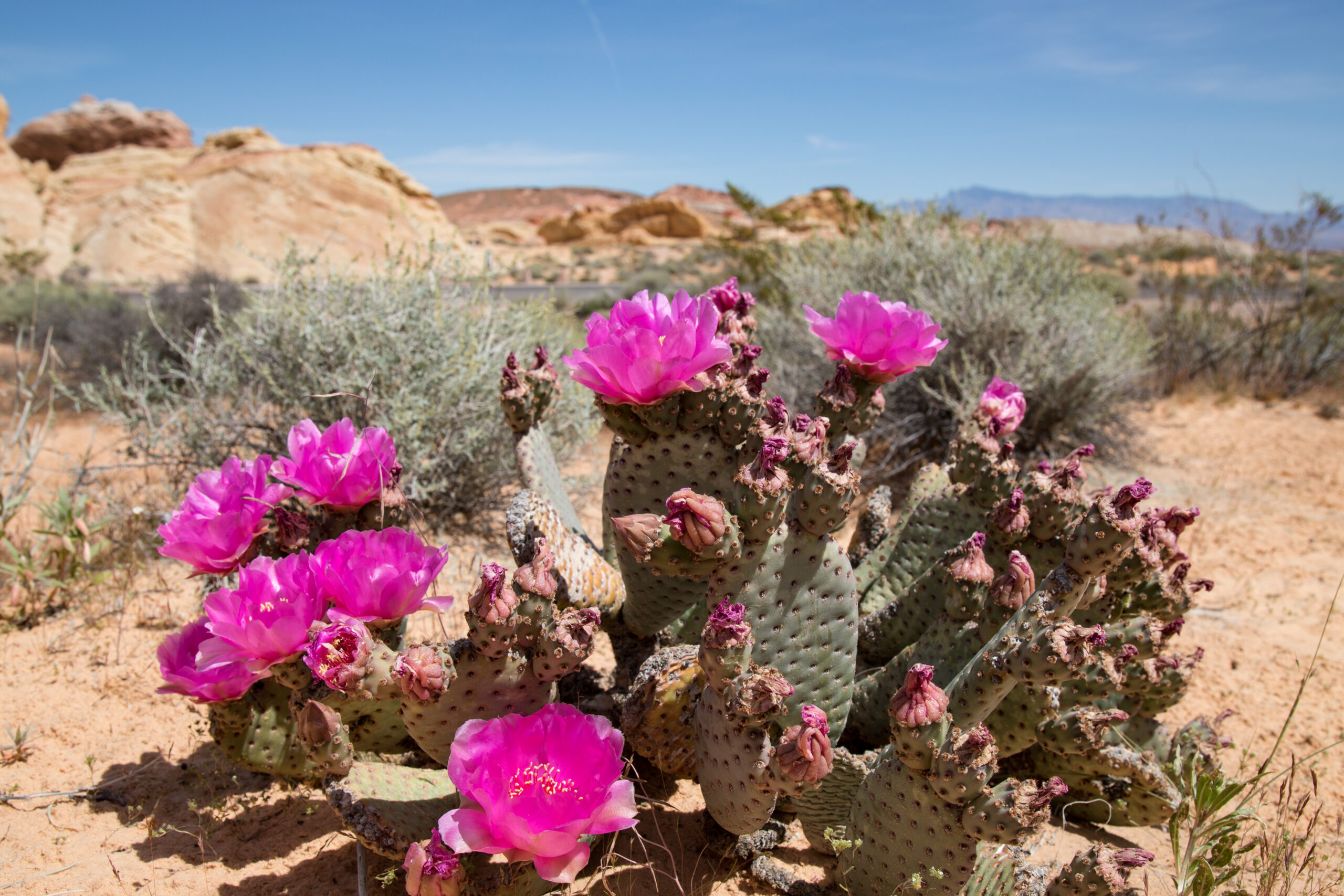
Myth 9: Southern Nevada Is at Imminent Risk of Major Wildfires
While wildfires cause concern in the desert and mountains of the Western U.S., the Clark County Fire Plan details how we are in a Low Hazard Category. It’s another myth we want to explain.
Let’s look at a few reasons why:
- Most homes and buildings include non-combustible roofing and siding.
- Defensible space surrounds 92% of homes, which is helped by a lack of wildfire fuel in the urban and suburban areas.
- Every building and home has a fire hydrant within 500 feet.
- In the rare event a wildfire starts in a populated area, Las Vegas Fire, Clark County Fire, North Las Vegas Fire, Nellis Air Force Base, and Bureau of Land Management help is on standby.
The biggest challenge of living in a wildfire-prone area is the impact of air quality from fires west of the Las Vegas Valley. To prepare for that potential, Clark County put together this great collection of resources.
Other Benefits of the Las Vegas Weather
Now that we’ve busted the myths of Las Vegas weather, please allow us to brag a little more. Thanks to the desert air around Las Vegas, the night skies stay clear, making it perfect for stargazing. Plus, sunrise and sunset never fail to disappoint, whether you’re watching from the top of Exploration Peak Park in Southwest Las Vegas or at Lake Mead in Boulder City.
We invite you to read more about what living here in Southern Nevada is really like through our blog, and while you’re spending time with us, why not consider a City Check to see why this is the perfect place for a business startup, relocation, or expansion?

